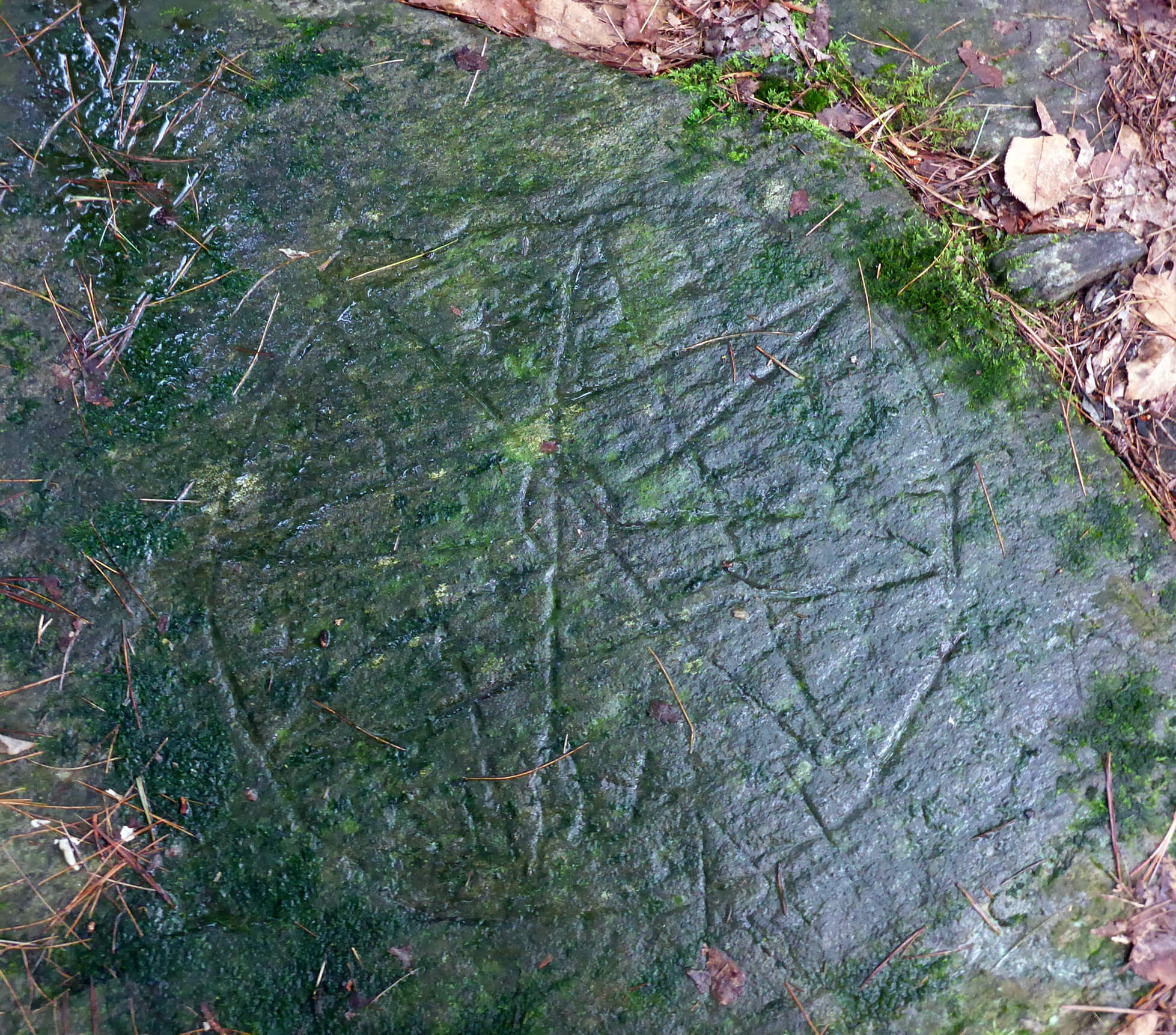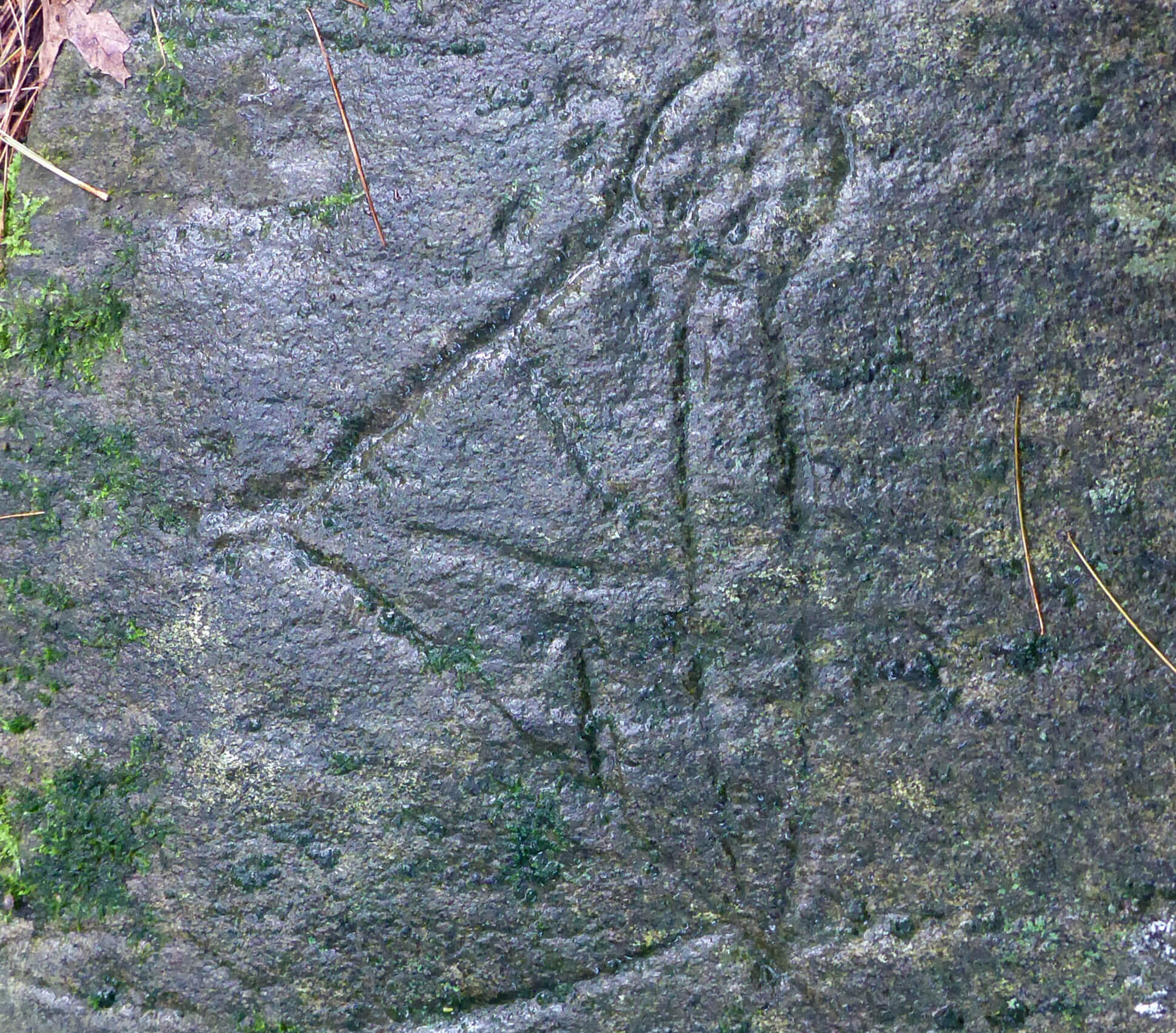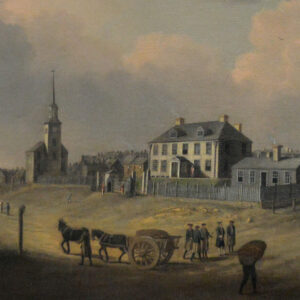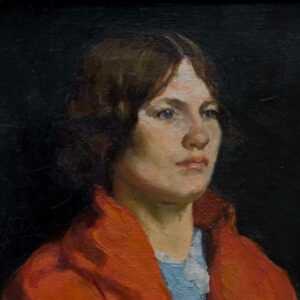Once-Known Mi’kmaw Artist

Once-Known Mi’kmaw Artist, Eight-Pointed Star, date unknown
Petroglyph, Bedford Barrens, Halifax
Photograph by Ray Cronin
The Mi’kmaq before contact with Europeans made many objects that we would now consider art. These activities were not commercial in basis but community-oriented, and related to games and other forms of entertainment, such as dancing and storytelling. “Another form of recreation [for the Mi’kmaq],” the Mi’kmaw elder and author Daniel N. Paul writes, “was the production of beautiful works of art. The women in particular were, and still are, highly creative and skilled artisans.” These artworks were largely made from ephemeral natural materials, and few examples of Mi’kmaw art from pre-colonization survive. Of the ones that do, none can be firmly attributed to having been made in K’jipuktuk. Objects were created by Mi’kmaw artisans to be used, rather than to be collected or preserved beyond their useful lives: “According to [Mi’kmaw] social values,” Paul writes, “there was no need to accumulate material things for oneself.” Objects may have been ephemeral, but the traditions endured, and Mi’kmaw artists and artisans create works based in traditional practices to this day.

Mi’kmaw artists and artisans did leave petroglyphs, drawings etched into stone. Over five hundred petroglyphs are known in various sites around Kejimkujik National Park, on the Fundy shore of Nova Scotia, dating back hundreds of years. The few petroglyphs that have been discovered in K’jipuktuk are now protected as the Bedford Petroglyphs National Historic Site. We cannot know who incised two drawings into the hard stone of the Bedford Barrens, one of a traditional Mi’kmaw eight-pointed star, the other of a figure. The petroglyphs are described by Parks Canada archaeologists as being “representations of the fertile power of the Sun and of the Oldest Male Ancestor Person.” The eight-pointed star, an ancient symbol used widely in Mi’kmaw iconography, is a representation of both the sun and the eight nations of Mi’kma’ki. The two images together may represent a sunrise ceremony, where “each morning [the ancient Mi’kmaq gave] thanks to the rising sun for the beginning of each day.” The exact age of these carvings is not known, but they appear to have been made with stone tools, which would mean that they are at least six hundred years old, predating European contact in Mi’kma’ki.
The eight-pointed star remains an important image in Mi’kmaw art, found in traditional arts such as basket making, textiles, and quillwork, as well as in contemporary visual art by Mi’kmaw artists such as Charles Doucette (b.1962), Jordan Bennett (b.1986), and Teresa Marshall (b.1962).

 About the Author
About the Author
 More Online Art Books
More Online Art Books
 Acknowledgements
Acknowledgements